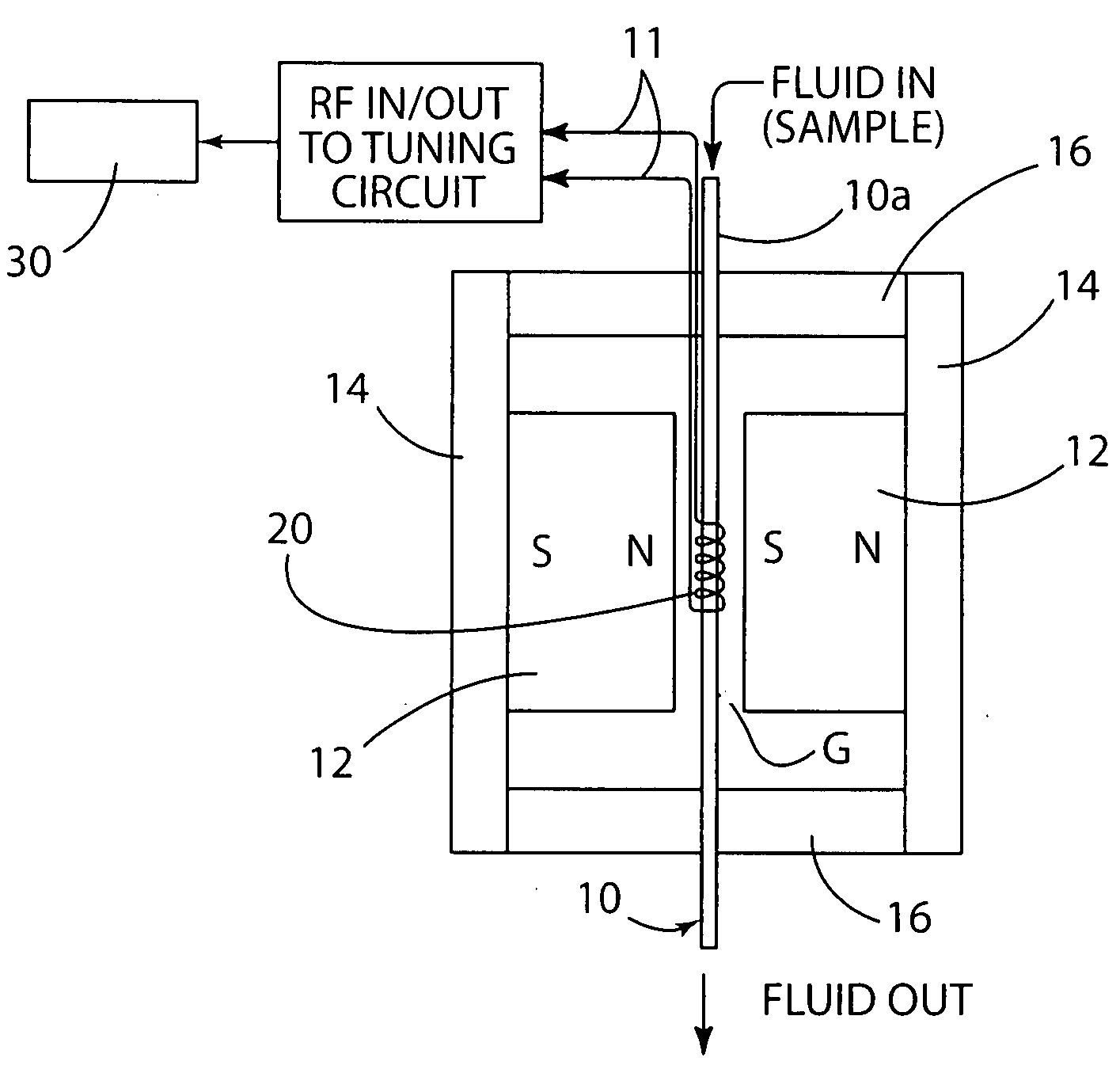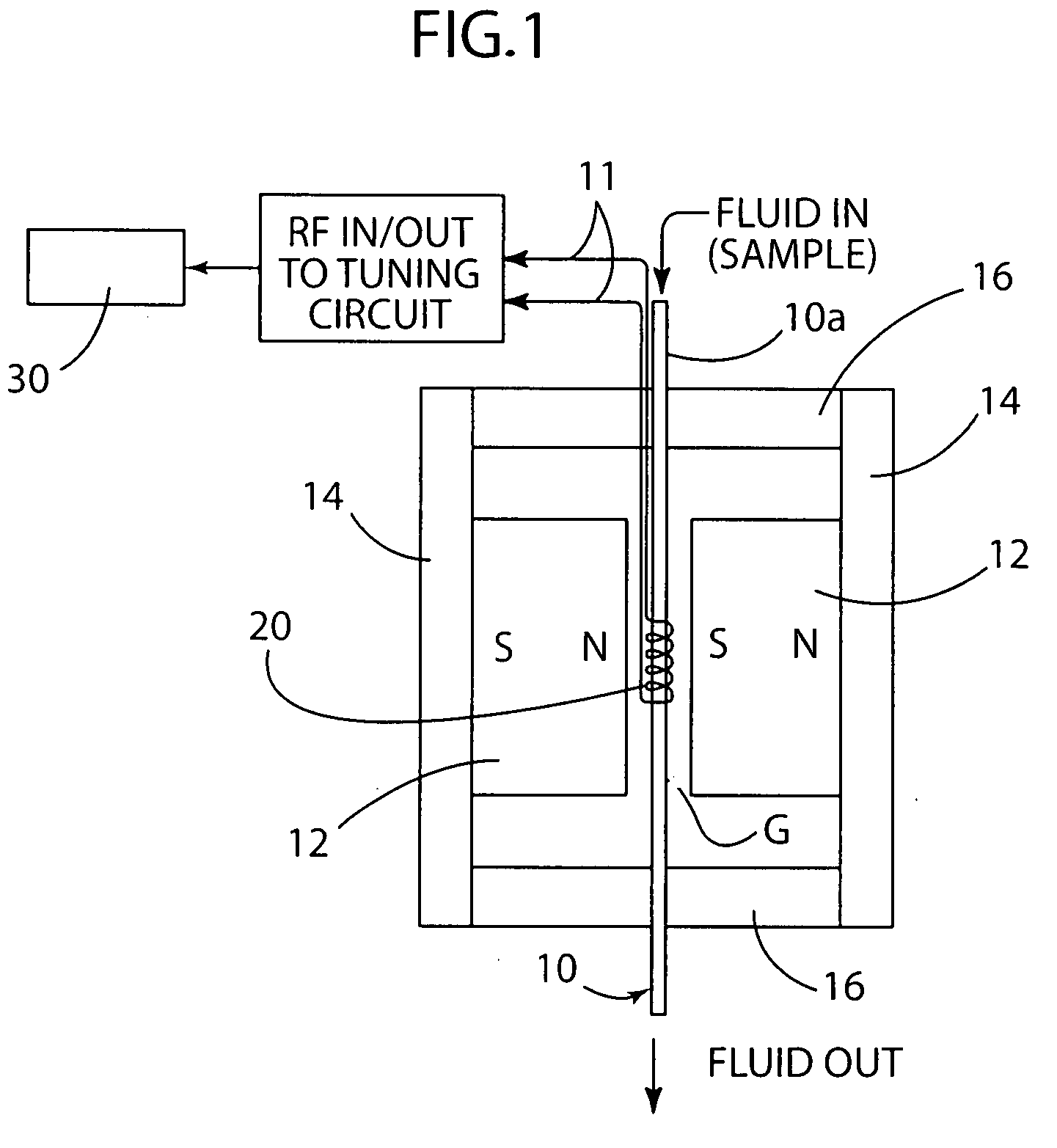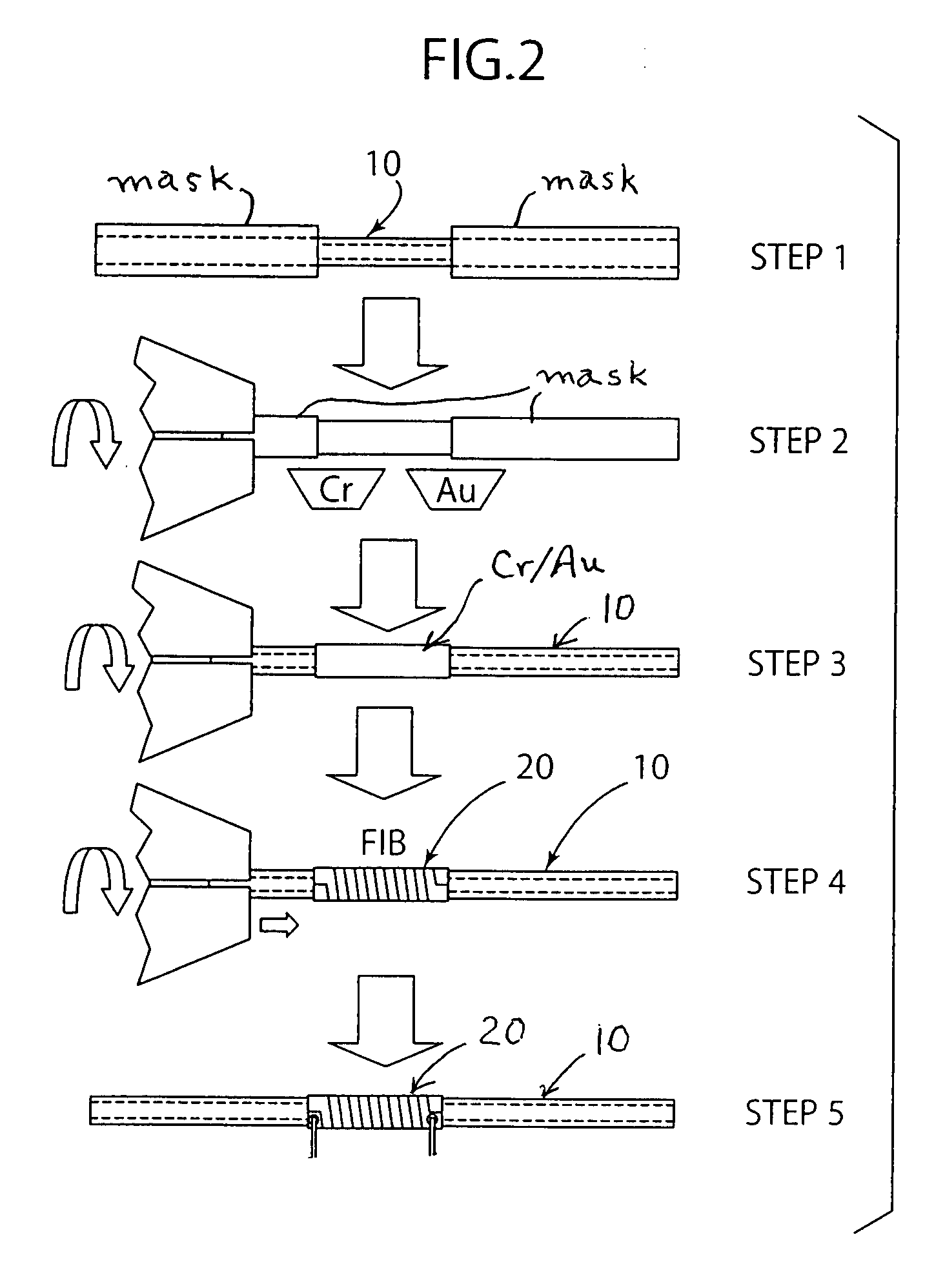Biological detector and method
- Summary
- Abstract
- Description
- Claims
- Application Information
AI Technical Summary
Benefits of technology
Problems solved by technology
Method used
Image
Examples
example
[0036]This Example involves an NMR-based detector having a 550 μm inner diameter, solenoidal microcoil deposited and micromachined on a capillary tube. Superparamagnetic iron oxide nanoparticles (SPIONs) are shown to measurably change the nuclear magnetic resonance (NMR) relaxation properties of nearby protons in aqueous solution.
[0037]Microcoils were fabricated onto quartz tubes each having a length of 2.5 cm and a 550 μm outer diameter and 400 μm inner diameter using the procedure depicted in FIG. 2. The quartz tubes are commercially available from Vitrocom, Mountain Lakes, N.J. Each tube was cleaned using hydrogen peroxide followed by acetone and isopropyl alcohol. After wet chemical treatment, the tubes were masked on each end (step 1, FIG. 2), and the 6.2 mm unmasked center targeted for metal deposition was etched for 15 minutes using a 100 W 02 / Ar plasma. The central region length was chosen based on the coil design with two 2 mm-long cuffs on either end. The masked tubes were...
PUM
 Login to View More
Login to View More Abstract
Description
Claims
Application Information
 Login to View More
Login to View More - R&D
- Intellectual Property
- Life Sciences
- Materials
- Tech Scout
- Unparalleled Data Quality
- Higher Quality Content
- 60% Fewer Hallucinations
Browse by: Latest US Patents, China's latest patents, Technical Efficacy Thesaurus, Application Domain, Technology Topic, Popular Technical Reports.
© 2025 PatSnap. All rights reserved.Legal|Privacy policy|Modern Slavery Act Transparency Statement|Sitemap|About US| Contact US: help@patsnap.com



